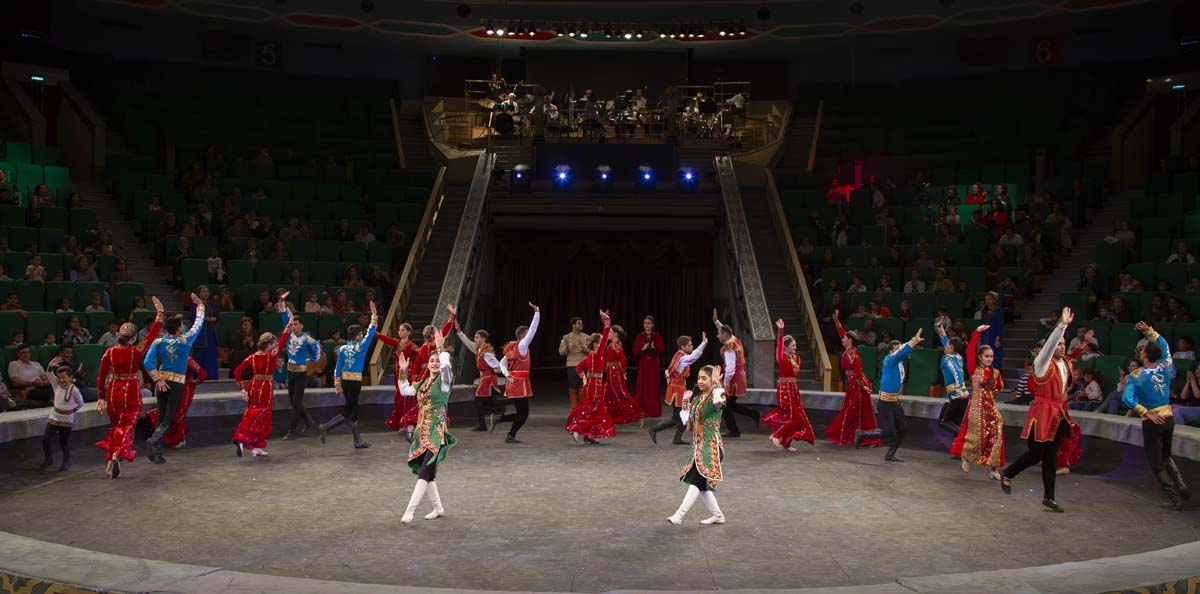The exposition, expanded in the Museum of Visual Arts, was organized by the Embassy of India and the Ministry of Culture of Turkmenistan.

Talented Indian people carefully protect their unique and original national culture, which was generated through the centuries, and proudly popularize their achievements. We are well familiar with hand-made inlayed brass dishes of Indian masters, different jewellery decorations made of natural stones, cosmetics and such popular brand as Indian tea. The exhibition of Indian textile is held for the first time in our country and rises increased interest.
It is remarkable that the visitors of the museum were met with the mannequins in Indian dress as well as some personnel of the museum and the Embassy of India wearing saris. The centre of the exposition had a bracket with colourful collection of semi-transparent light flowing saris. After the short master-class on donning the sari given by one of the employee of the Indian Embassy, most of the women participating in the exhibition put on the saris having pleasantly felt themselves as Indian women. The organizers of the exhibition explained that saris are weaved from the thinnest cotton thread sometime adding a bit of silk.

Together with clothes, the Indian textile was represented by tapestry, carpets and table-cloths with decorative stones made in different states of India where the best families of textile masters work. Depending on the state, the items have their own style and colour preferences. The tapestry was mainly used as a cover for decorative cushion with interesting picture. The carpets, demonstrated at the exhibition, are very different from what we could imagine. They are made of double fabrics and skilfully decorated by the appliqué.
However, one of the decorations – the toran, used for the entrance door, undoubtedly looked like Turkmen item gapalyk, which is used for the same purposes. This similarity is explained by some scientists as a spread of numerous cultural values along the Great Silk Road and as migration of Turkmen craftsmen during Mongolian invasion.

The exhibition of Indian textile expanded our knowledge of the art of Indian masters and did not leave anyone indifferent.

Talented Indian people carefully protect their unique and original national culture, which was generated through the centuries, and proudly popularize their achievements. We are well familiar with hand-made inlayed brass dishes of Indian masters, different jewellery decorations made of natural stones, cosmetics and such popular brand as Indian tea. The exhibition of Indian textile is held for the first time in our country and rises increased interest.
It is remarkable that the visitors of the museum were met with the mannequins in Indian dress as well as some personnel of the museum and the Embassy of India wearing saris. The centre of the exposition had a bracket with colourful collection of semi-transparent light flowing saris. After the short master-class on donning the sari given by one of the employee of the Indian Embassy, most of the women participating in the exhibition put on the saris having pleasantly felt themselves as Indian women. The organizers of the exhibition explained that saris are weaved from the thinnest cotton thread sometime adding a bit of silk.

Together with clothes, the Indian textile was represented by tapestry, carpets and table-cloths with decorative stones made in different states of India where the best families of textile masters work. Depending on the state, the items have their own style and colour preferences. The tapestry was mainly used as a cover for decorative cushion with interesting picture. The carpets, demonstrated at the exhibition, are very different from what we could imagine. They are made of double fabrics and skilfully decorated by the appliqué.
However, one of the decorations – the toran, used for the entrance door, undoubtedly looked like Turkmen item gapalyk, which is used for the same purposes. This similarity is explained by some scientists as a spread of numerous cultural values along the Great Silk Road and as migration of Turkmen craftsmen during Mongolian invasion.

The exhibition of Indian textile expanded our knowledge of the art of Indian masters and did not leave anyone indifferent.






